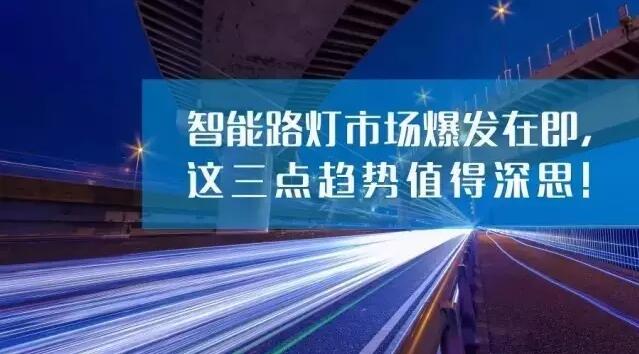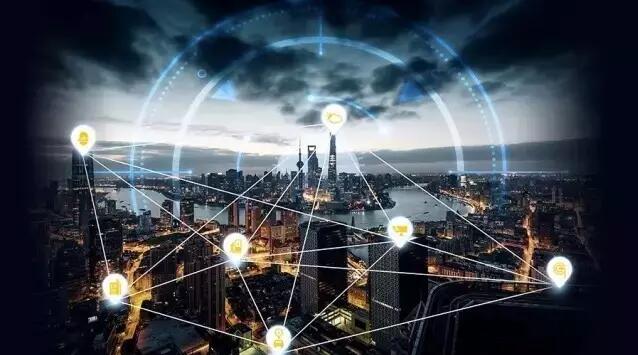In recent years, national policies have been pushing smart cities, and smart street lighting has become one of the most basic public facilities in the construction of smart cities. According to the "13th Five-Year Plan for Urban Green Lighting Planning", China will build 12 million LED lights with a growth rate of 46% and transform 50% of existing street lamps, with a total scale of 29 billion yuan. The huge market naturally attracts the attention of many companies, but there are also many problems that need to be resolved.

Street lamp control market is blooming, standard compatibility is the trend
Many standards for intelligent lighting have not been unified. In outdoor lighting, especially intelligent street lighting, in addition to the mainstream power line carrier communication technology (wired control technology), there are also wireless control technologies based on LoRa and ZigBee.
LoRa can communicate over long distances with low power consumption and can be powered by battery or other energy harvesting; lower data rates also extend battery life and increase network capacity. The LoRa signal is also very penetrating to the building, making it ideal for low-cost, large-scale IoT deployments.
ZigBee technology is born in a complex industrial environment, so it has the advantages of high security, reliability, low power consumption, and strong self-organizing network. For intelligent lighting street lamps, the control system can be complicated and varied. The environment is naturally more reliable.
However, with the advent of NB-IoT technology, the industry is increasingly calling for NB-IoT to become the mainstream wireless control technology for the Internet of Things. In the last issue, we also introduced the technical advantages and application scenarios of NB-IoT in detail.
In addition to the advantages of low power consumption, low cost and high stability, compared with LoRa and ZigBee, the biggest feature of NB-IoT is that the transmission distance reaches an astonishing 10km, which can cover a small county. And a base station can carry more than 200,000 terminals, which means that it is easy to manage each street lamp, and can cover deep underground parking lots, underground pipes and other fields. At present, many smart streetlight projects in China have used NB-IoT technology.

Nuclear "core" is the main driving force of innovation
The development of intelligent street lamps also puts forward new requirements for the intelligent control chips in their application systems: With the improvement of intelligent control chips and driving power supply technology, the problems of heat dissipation, light decay, power supply and transmission stability of LED street lamps are solved. At the same time, the continuous rapid decline in prices has also increased the cost performance of intelligent street lighting systems.
In addition, as more functions are integrated into the smart chip, the chip has become a major technological innovation component. The current smart chip not only needs to be updated with intelligent control technology, power line carrier, WiFi, Bluetooth, GPRS, 4G, Rola, etc. The technology is compatible with each other according to customer requirements, and the future smart street light control chip is given more possibilities.
Artificial intelligence makes smart street lights even more powerful
At present, intelligent street lamps realize remote centralized control and management of street lamps by applying power line carrier and wireless communication technologies, 3G communication, cloud computing, Internet of Things and mobile internet. It has the functions of automatically adjusting brightness, fault active alarm, lamp cable anti-theft, remote control, remote meter reading and so on.
Smart street lights can greatly improve the level of public lighting management, save power resources, and reduce operating and maintenance costs. The essence of smart street lights is the fine management of lighting.
It can be said that where there are street lights, where is the management area of ​​the city, in the era of smart cities, the establishment of street lighting Internet of Things based on the widely distributed street lamps in the city can avoid the repeated capital investment of the urban infrastructure network sensing facilities.

Nowadays, artificial intelligence technology is in the ascendant: in the first half of this year, Ke Jie and Alphago's man-machine battle ended with AlphaGo's victory, which also brought people's attention back to artificial intelligence.
The combination of streetlight control systems and artificial intelligence, one of the urban infrastructures, has a natural advantage. The vast amount of data it collects is only difficult to get fully applied by relying on manual processing. The involvement of artificial intelligence technology can effectively complement this short board. Simply put, the potential commercial benefits of artificial intelligence awareness technology far outweigh the cost savings brought by automation, which is mainly reflected in:
Faster action and decision making (eg, automatic detection, scheduling and scheduling of street environments)
Better results (eg, control flexibility, power monitoring, demand forecasting)
Higher efficiency (ie, better use of sensor equipment and control equipment),
Lower costs (for example, automatic control and response mechanisms reduce labor costs)
Larger scale (that is, large-scale tasks that cannot be performed by human resources)
Product and service innovation (from adding new features to creating new products)
It is foreseeable that in the near future, people will see more surprises and conveniences brought by the intelligent street lamp system.

CNG/LPG Differential Pressure Sensor
Cng/Lpg Differential Pressure Sensor,Barometric Pressure Sensor,Digital Pressure Sensor,Strain Gauge Pressure Transducer
Shenzhen Ever-smart Sensor Technology Co., LTD , https://www.fluhandy.com